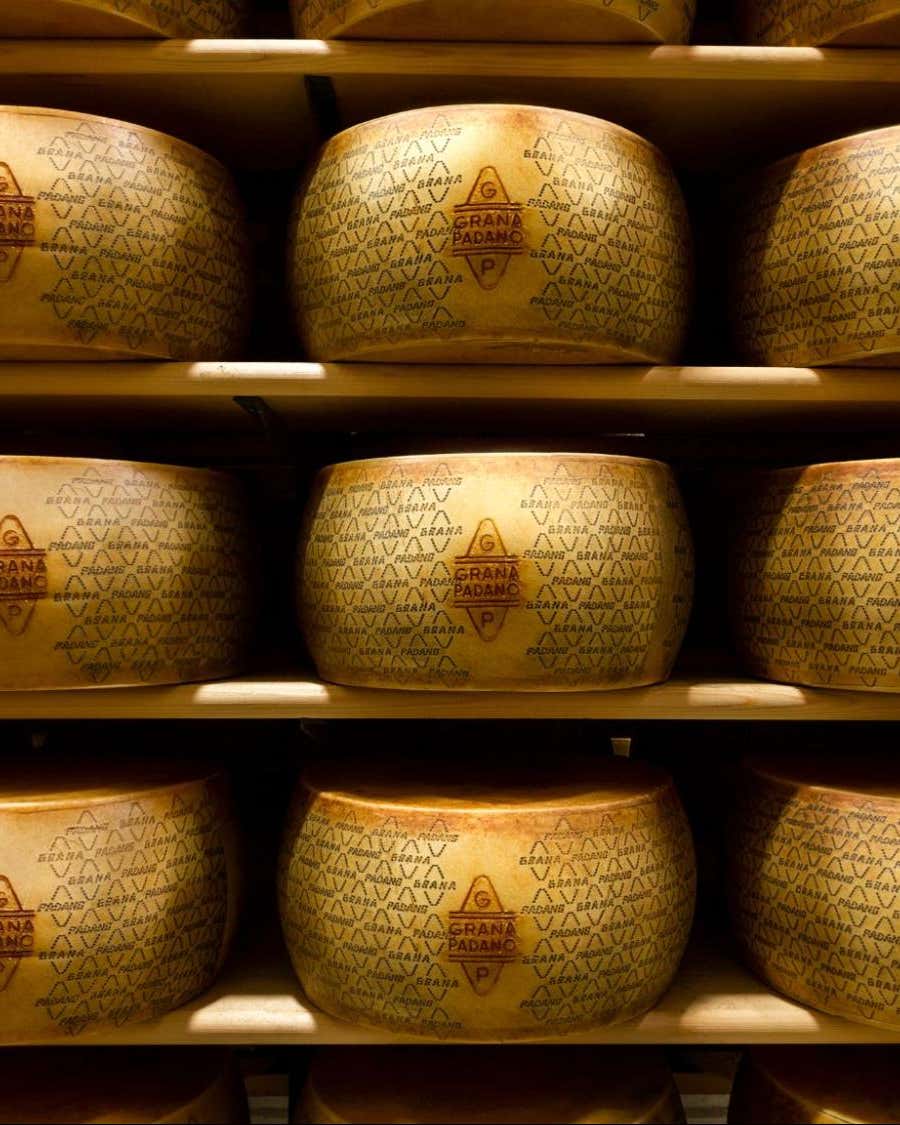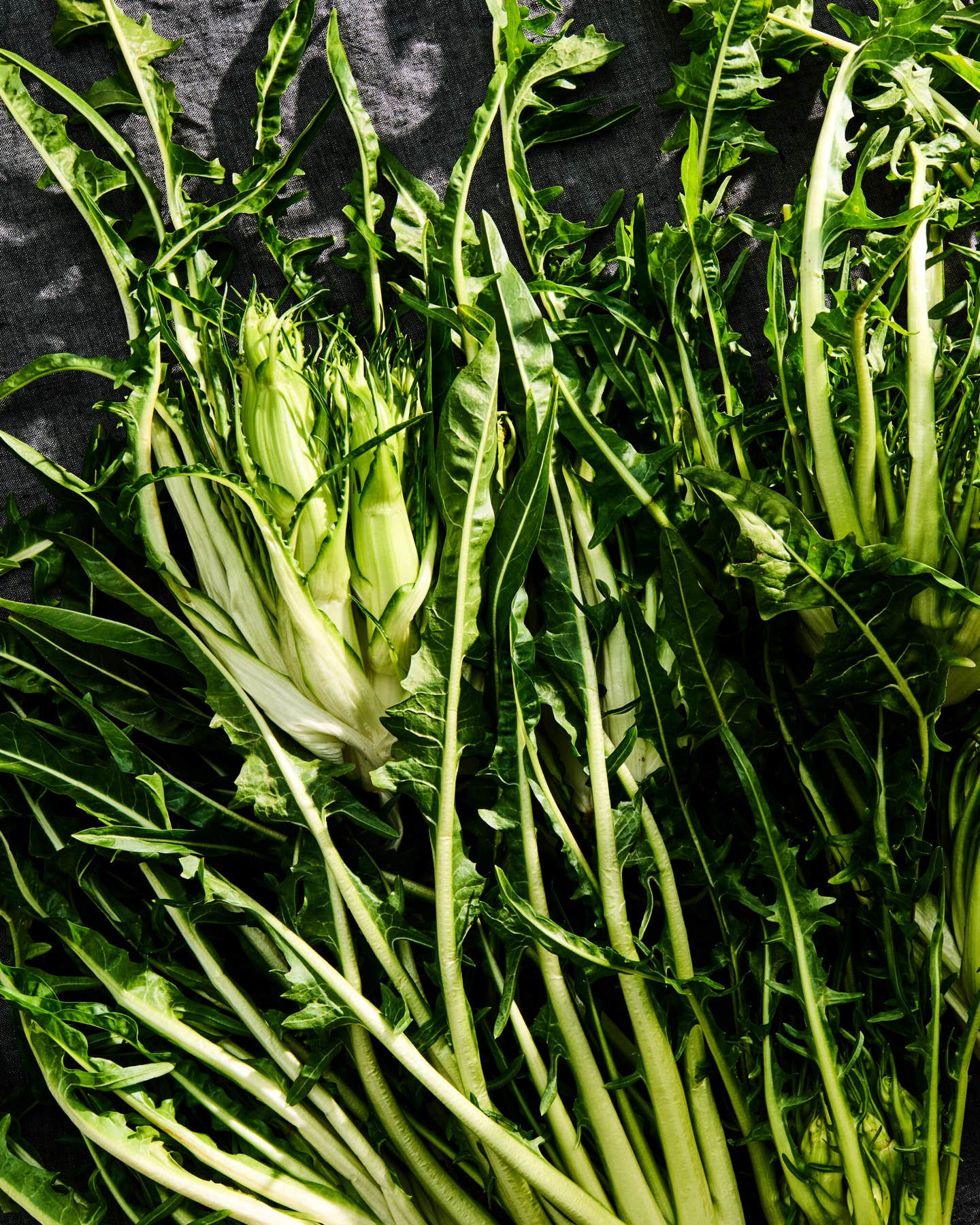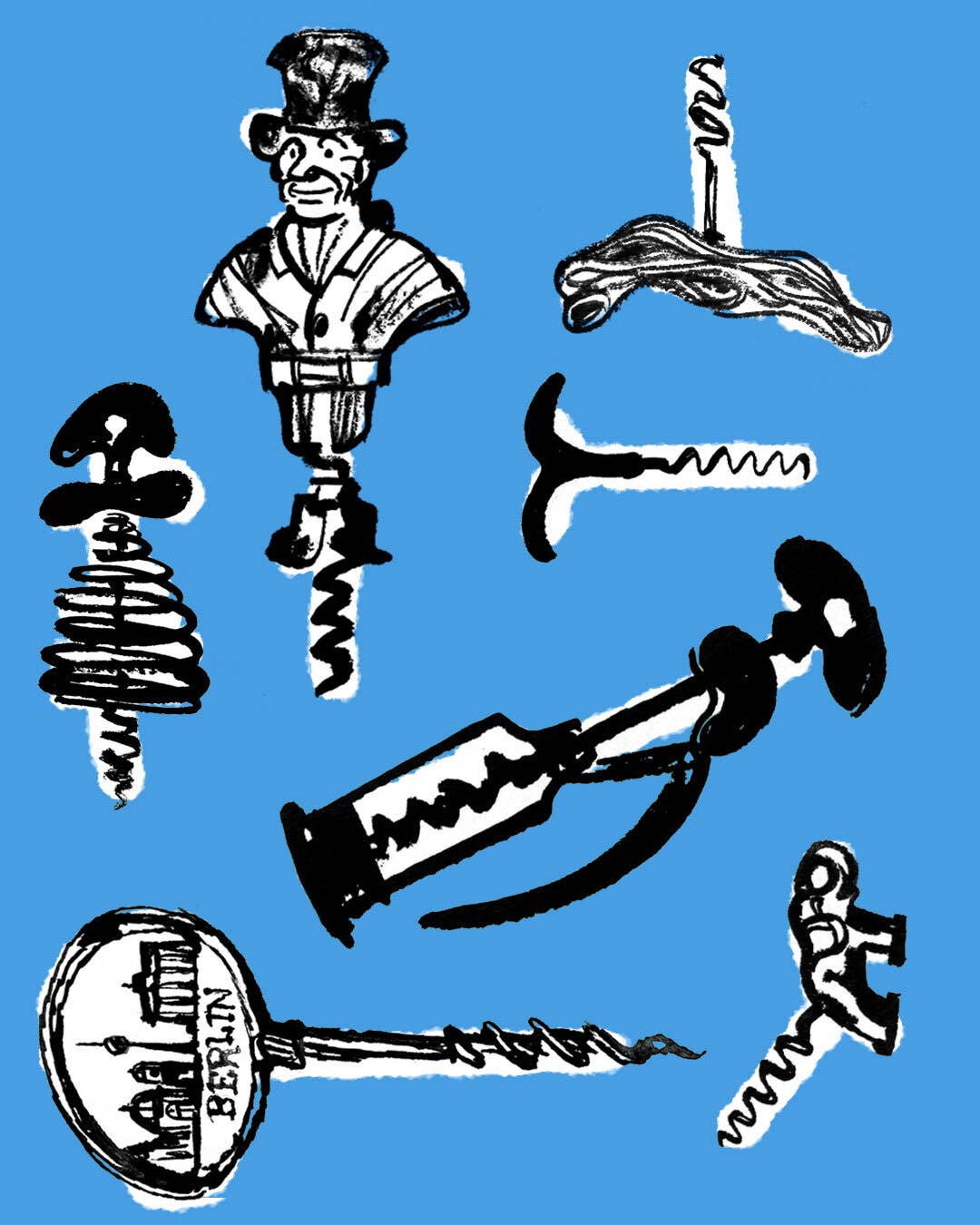Why Everybody’s Talking About the New Via Carota Cookbook
An interview with the chefs of one of New York’s favorite restaurants reveals how easy it is to cook seasonal Italian food at home.
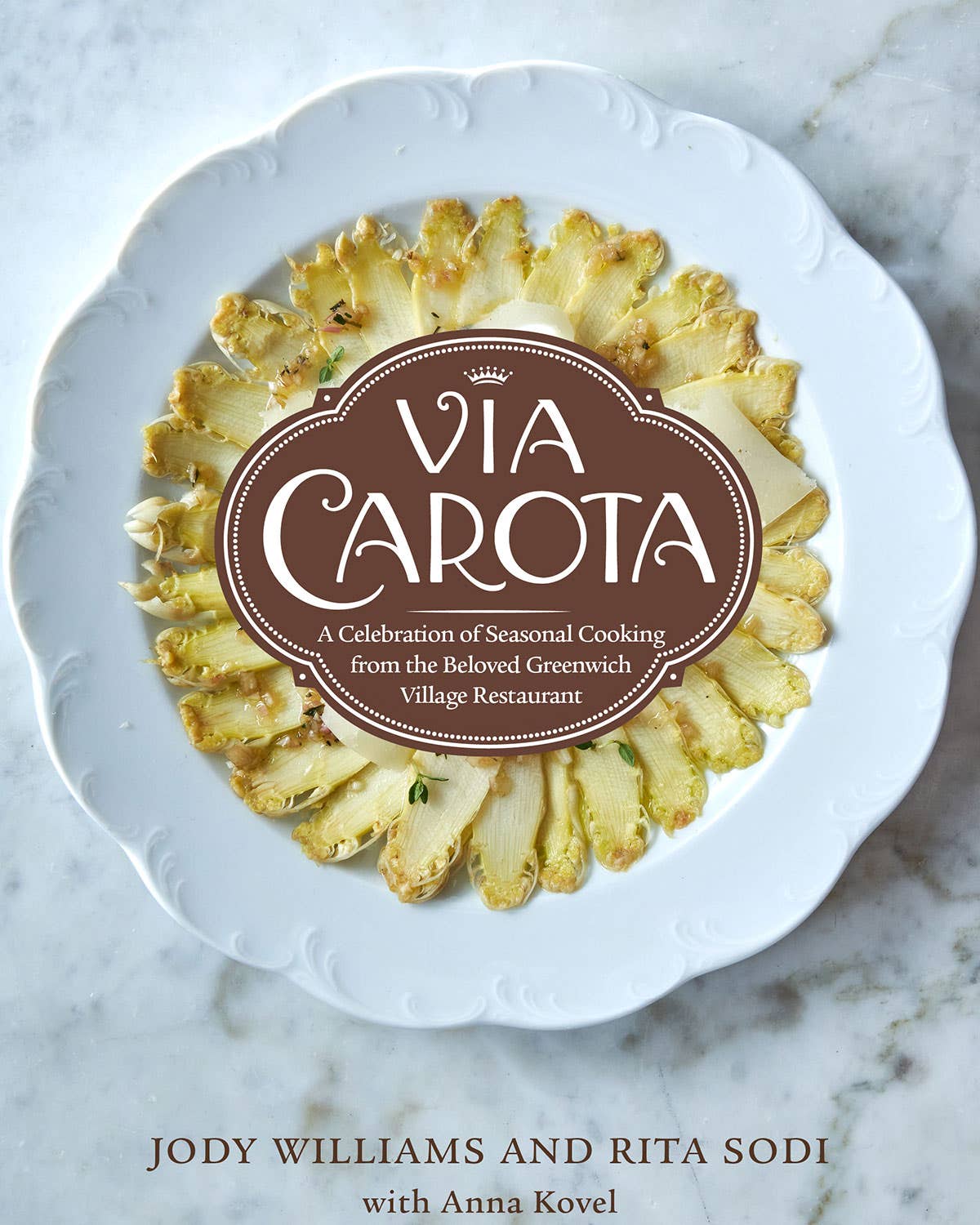
This story is brought to you by SAVEUR Cookbook Club, our passionate community of food-loving readers from around the globe celebrating our favorite authors and recipes. Join us as we cook through a new book every two months, and share your food pics and vids on social media with the hashtags #SAVEURCookbookClub and #EatTheWorld.
Rita Sodi and Jody Williams cook like Hemingway wrote. With a deft touch and as few straightforward ingredients as possible, the pair composes dishes that are equal parts familiar and revelatory. Cultured butter and salted anchovies. Tonnarelli cacio pepe. A delicate, creamy risotto flavored only with meyer lemon. It’s an approach that stands out in a city with more than a few high-end restaurants known for caviar “bumps,” three-figure cheeseburgers, and a more-is-more approach to dining.
Take insalata verde, one of the only regular items on the hyper-seasonal menu at their beloved West Village trattoria Via Carota. It is simply a tall pile of greens tossed in tart, well-seasoned vinaigrette, but what’s essentially a jumble of leaves becomes transcendent in Sodi and Williams’ kitchen. Samin Nosrat dubbed the insalata “the best green salad in the world.”
But Via Carota isn’t only about the food. The wood-accented trattoria manages to feel both intimate and celebratory. Sodi and Williams—married business partners—finish each other’s sentences in Italian and English. Sodi is terse; Williams is effusive. They’ve been at it since 2008, when Williams pulled up a barstool at Sodi’s first restaurant. Today, they run five successful businesses whose throughline is masterful plates of unembellished classics.
Unfortunately for us New Yorkers who would just as soon eat at Via Carota daily (bank account be damned), wily diners have caught on. Since the restaurant opened in 2014, wait times have pushed three hours. Even on the coldest days, locals and out-of-towners alike happily settle for outdoor seats, where they feast on freshly grilled mushrooms topped with smoked scamorza cheese beneath the heat lamps, their blissful exhales visible in the freezing air.
Those mushrooms are one of many memorable recipes in the new Via Carota cookbook containing 140 dishes, from carciofi fritti to sugo di carne to the restaurant’s cult-favorite hand-chopped svizzerina, a hybrid of steak tartare and an exceptionally tender filet mignon.
I sat down with Williams and Sodi to get the behind-the-scenes scoop on their new cookbook and to hear what’s next for their growing restaurant empire.
Ella Quittner: You begin the cookbook with a dedication, the Italian phrase forza, which I know usually means something like, “you can do it!” or “you’ve got it!” Why?
Rita Sodi: It’s a word my mother always told me. Anything, you can do it—forza, forza. When Jody joined the family she started to use the word too.
Jody Williams: For me it’s encouragement. When you are struggling, when you are tired, when you are going uphill, forza. We got it. These last few years? Forza, everybody—keep going. We use it so much, it’s almost like a sigh.
EQ: You joke in the book about how you opened Via Carota so you could actually see each other. What was that time in your lives like?
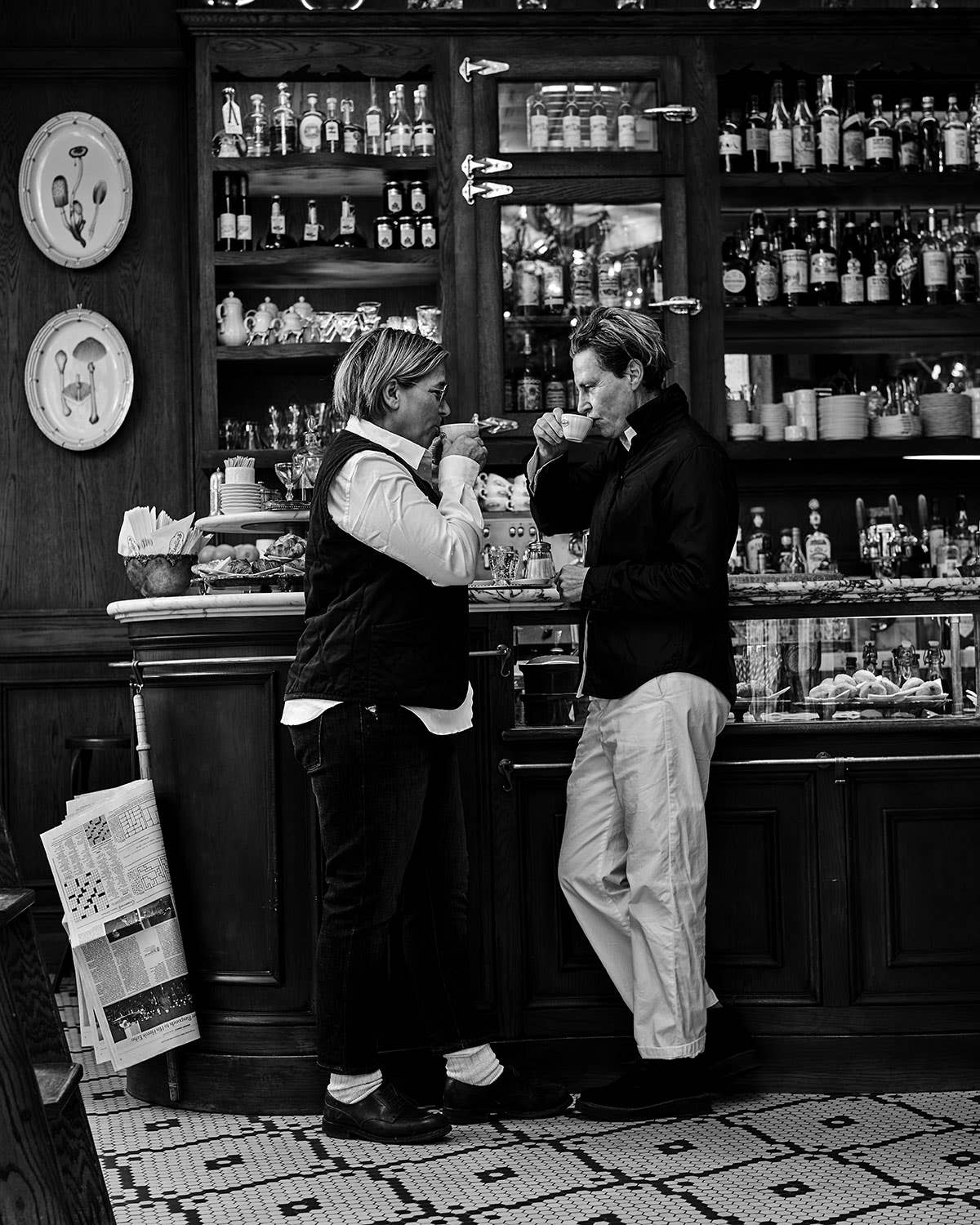
JW: It’s true! With Rita at I Sodi, me at Buvette, and early days—placing orders in the middle of the night, getting up to clean and do it all—we joked we should see each other. And we looked down the block and thought, maybe we should do something there. Rita was like, forza, let’s do it, and we started figuring it out without a big plan.
RS: We knew it would be a place near our other restaurants. We really didn’t know the name yet. Everything came together naturally without thinking too much.
JW: That’s the way we go about all of the restaurants. We need to get inside, see where the light comes in, and understand the space. The space will tell us where things go and what things should be. It reveals itself. We cook how we want to eat and the way we like to eat is to go out and eat mostly sides, which are usually relegated to this sad little corner. We want the kale, and the potatoes, and the turnips, and skip the mains.
RS: People can choose how they eat. It’s not the straightforward “you need to have a pasta, then a main course.” It’s freedom from the classic Italian way to eat.
EQ: Then you opened Via Carota. Your other two restaurants at the time, I Sodi and Buvette, were quite popular—but did you anticipate what a smash success you’d have? In 2018, The New Yorker food critic Hannah Goldfield called it “New York’s Most Perfect Restaurant.”
JW: Never! We were totally surprised at the success, and appreciative.
RS: When we build something, we don’t think about the success—we think about making it somewhere we would go every day. And we’ve been lucky, very lucky.
(Williams knocks on the wooden table.)
EQ: It’s regulars from the community, but it’s also everyone else! People travel from other states to visit.
JW: There’s something soulful that happens at Via Carota, that [Goldfield] wrote about. It’s something we couldn’t buy or create. It’s just nurtured, grown. We don’t make it precious, we don’t make it about us. Deep down if you stripped away all the things and you looked into Rita or me, as people, there’s this desire to give, to share. This thing of, if we have something, you break it in half to give a piece to somebody else.
EQ: The cookbook reflects that beautifully. And like the restaurant menu, it adheres to the seasons—a section for each one, more or less. As chefs, or as home cooks, is there ever a time you would break that rule and cook something out of season?
RS: No. No way.
JW: Rita is like, “Tomato season starts in almost July.” Everyone has tomatoes around June 15, but she’s like, “We’re gonna wait.” You just listen and respect [the produce]. Seasonality just makes sense; it was never a gimmick or a trend.
RS: There is a reason why seasons have different vegetables. The weather makes those vegetables. Your body needs something different depending on the weather.
JW: Rita did want to try a wedge salad at home [out of season]. She picked up a head of iceberg lettuce. And she really wanted to try it.
(Williams laughs so hard, she can’t continue.)
RS: Never again. I was like, “So what do we do now?” And Jody was like, “Oh no. You chose the worst one. We cannot do this.”
JW: She chose the one iceberg lettuce head that was empty in the middle. So instead, we broke it up by hand and threw it into pinzimonio.
EQ: Many dishes in the cookbook have memories attached to them. Which is most meaningful to each of you?
JW: I would say the coniglio fritto. There was this moment when I went to Rita’s home on Via Carota, just outside of Florence, when her mother died, and there was not a lot of conversation, but there were a lot of people. And the butcher came up the hill and dropped off meat. And everybody came and dropped stuff off; everybody just knew what to do, and what to cook. I was the prep cook and the sous chef. Out came this blue and white tablecloth that Rita was rolling out tortelli di patate on, cutting mountains of veg so small to make sugo di carne, and her sister fried up rabbit. And you, [Rita], told stories about your mother through all this, and it was beautiful. Her mother could have three people or 50 people at lunch depending on who was around, so sometimes one or two rabbits wouldn’t be enough, so she would grab a loaf of bread, chop it up, dredge it, season it, and fry it together with rabbit. So that’s what sits today under the rabbit leg. It’s so delicious and such a surprise. Moments like that are when you really learn to cook.
RS: Mine is the ribollita. In wintertime, people gather more than in other seasons, lingering by the table. It’s this thick vegetable dish that’s with you, warming you, giving you this comfort. It’s one of my favorite memories, the ribollita.
EQ: The book is more than 400 pages. Did you have trouble deciding what to include? Did any recipes not make the cut?
JW: Sure. Yes. And we wanted to do some new things too, but we left it to the heart and soul. I kept wanting to steal some I Sodi recipes, but I did not get the I Sodi steak tartare in the book.
EQ: In the spotlight on truffles on p. 320, you write that your truffle connection is a special vendor who brings a basket of black truffles and a basket of white truffles, which Rita sorts through, sniffing, and touching. It’s such a beautiful image. What is Rita looking for? What qualities make an ideal truffle, for those of us picking them blind?
RS: The smell itself of the truffle—the truffles all smell, but I’m looking for the smell I like. And you want them to be firm, so you can slice them really nice and thin. You don’t want them to be wet inside, with soft spots [you can feel].
EQ: Water gets its own section in your book as an ingredient. Much has been written about the famous Via Carota insalata verde vinaigrette. You soak frutti di mare before deep frying. The potatoes in the patate fritti. What are some other ways water is important in the cookbook?
JW: [For example], the lemon risotto is water-based. If we used chicken stock, that would be a chicken lemon risotto. With water, lemon juice, and a few leaves of basil, you have made its own little stock.
RS: And for cooking the pasta, water is essential. Water is an ingredient!
JW: Water is an ingredient, but it’s also a purifier; by just allowing and being comfortable, you’re able to let other things in a dish stand out because you’re not crowding it or clouding it. It’s like what’s said about writing: take away until you can take no more.
EQ: If you were to curate a winter dinner menu for a home cook from the book, what dishes work well together?
JW: The easiest thing [to start] is piles of pinzimonio and olive oil. Add watercress and salad leaves, then you have your celery, carrots, puntarelle, maybe artichokes, put in a boiled egg—elaborate on pinzimonio. And little bruschettas are nice, with gorgonzola and pear, or with ricotta and pear.
RS: And truffles, if you can get them, will be a good addition to any dish. Besides pasta, they’re good on cheese, eggs, more or less a lot of vegetables too.
JW: And when entertaining, or even if it’s just Rita and I, we will spend all day at the table. At one end of the table is what awaits you next. And the other end is what you’re eating now. Over there might be nuts, dried fruit, cookies, and in front of us we’re having salami and cheeses. So I would crowd the table with things easily prepared. Have an artichoke dish come out. Have the carrot dish. Have a whole series of vegetables.
RS: And chicory.
JW: And then go for a big bowl of pasta. Maybe a risotto, though you have to stand and stir, so that’s a little challenging. Or maybe you’re going to pull something out from the oven, like the rigatina con cipolline, or the braciole al latte with a bunch of kale ripped up underneath. And then have the next thing waiting! Like a dolce, or cheese. Give more reasons to hang out and drink.
This interview was condensed and lightly edited.
Keep Reading
Continue to Next Story







